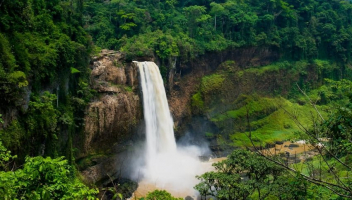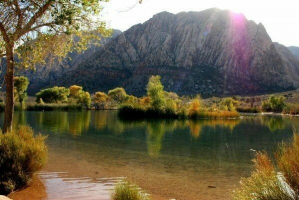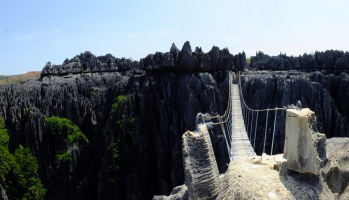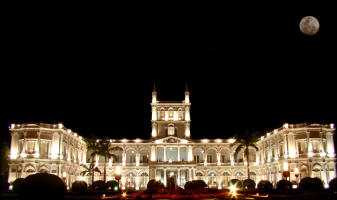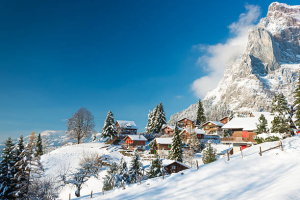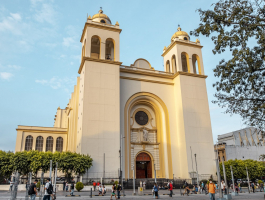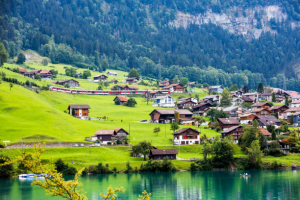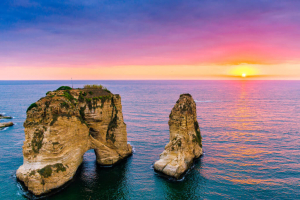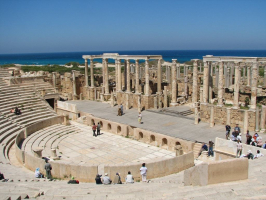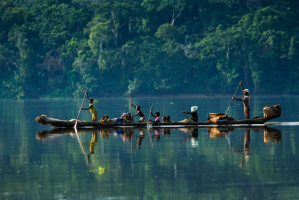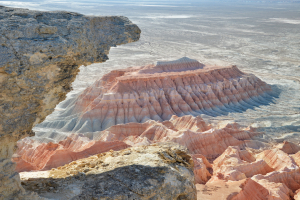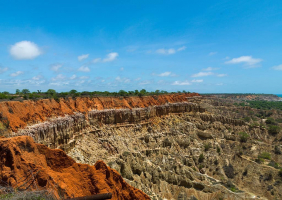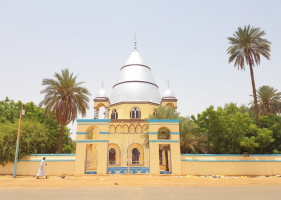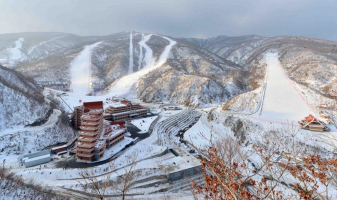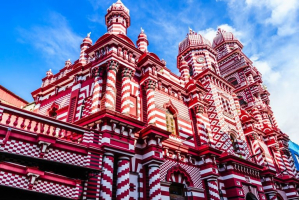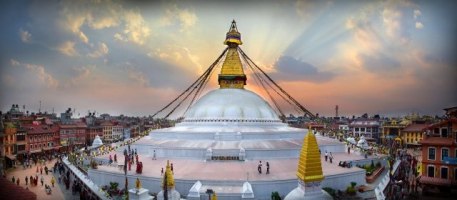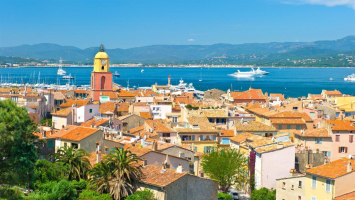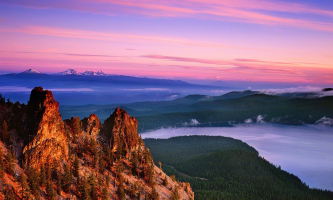Top 10 Best Places To Visit In Oman
Oman is an interesting location with wonderful sights and cities that are sometimes overlooked by tourists. Make Oman the next destination on your travel ... read more...bucket list if you enjoy desert scenery, majestic mountain ranges, historic forts, and warm beaches all year round. Let’s have a look at the list of the best places to visit in Oman that Toplist has compiled for you!
-
Muscat is absolutely the first name on the list of the best places to go when visiting Oman. Muscat is one of Oman's most attractive cities, so it is no surprise that it serves as the country's capital. Muscat is known for its must-see sites, magnificent cities, and fancy highways. Palaces, forts, museums, and markets abound in this famous city, providing something for everyone.
The twin forts of Al Jalali and Al Mirani, which have been transformed into museums and are open to the public, guard the palace. Visitors can also visit the Sultan Qaboos Grand Mosque in the morning, where they can marvel at attractions such as a gigantic crystal chandelier, the world's second-biggest Persian carpet, and marble wall panels.
Location: Muscat, Oman
Best time to visit Muscat: The winter months of November to Mid-March are the finest time to visit Muscat. Muscat's climate is hot and arid, with blistering summers and comfortable winters.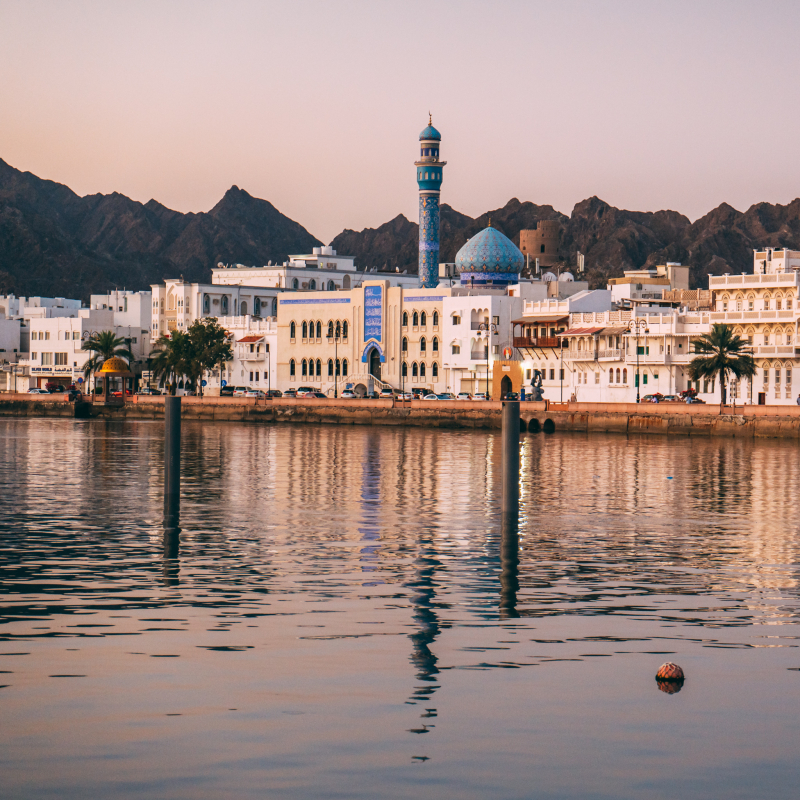
Muscat. Photo: travelawaits.com 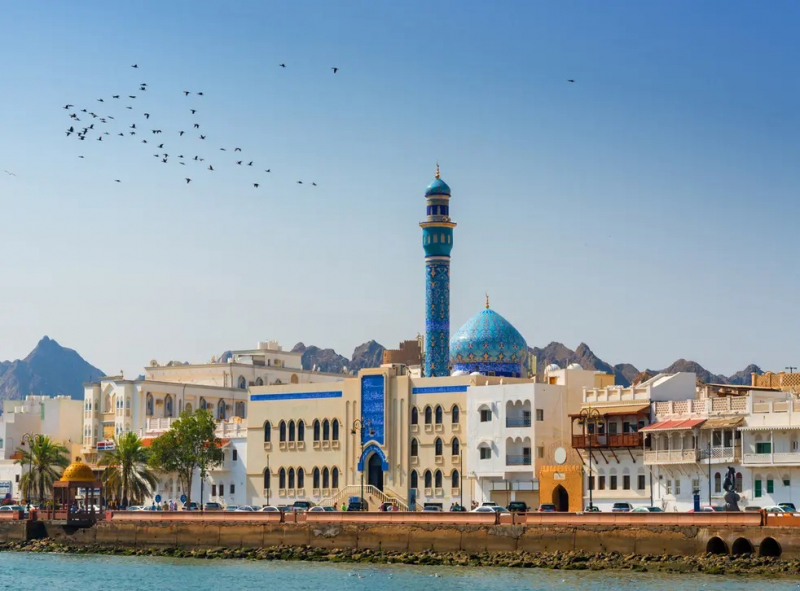
Muscat. Photo: independent.co.uk -
The city of Nizwa functioned as the capital of Oman throughout the sixth and seventh centuries. The city is best known today for its magnificent fort, which was erected in the 17th century under Sultan Bin Saif Al Ya’ribi’s leadership. Some parts of the fort, however, date back to the ninth century. Nizwa is one of Oman's oldest cities, and it was once a hub for trade, religion, education, and art. Because it was an important meeting point at the base of the Western Hajar Mountains, Nizwa grew in importance.
Honey traps and unusually shaped windows for shooting incoming enemies are among the fort's intriguing defense measures. You may also visit the souk, or open-air market, in Nizwa, as well as the unusual goat market, which takes place twice a week.
Location: Nizwa, Oman
Best time to visit Nizwa: Nizwa has pleasant weather throughout the year. May, June, July, August, and September are the warmest months on average. The months of January, February, May, September, and December are dry in Nizwa.
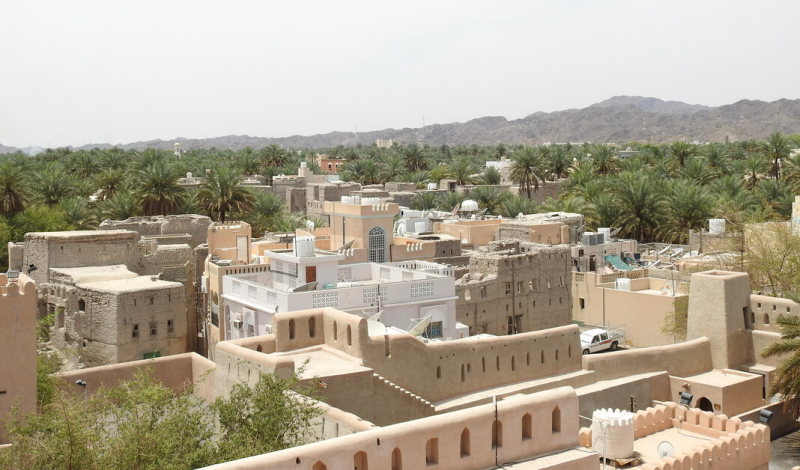
Nizwa. Photo: passionpassport.com 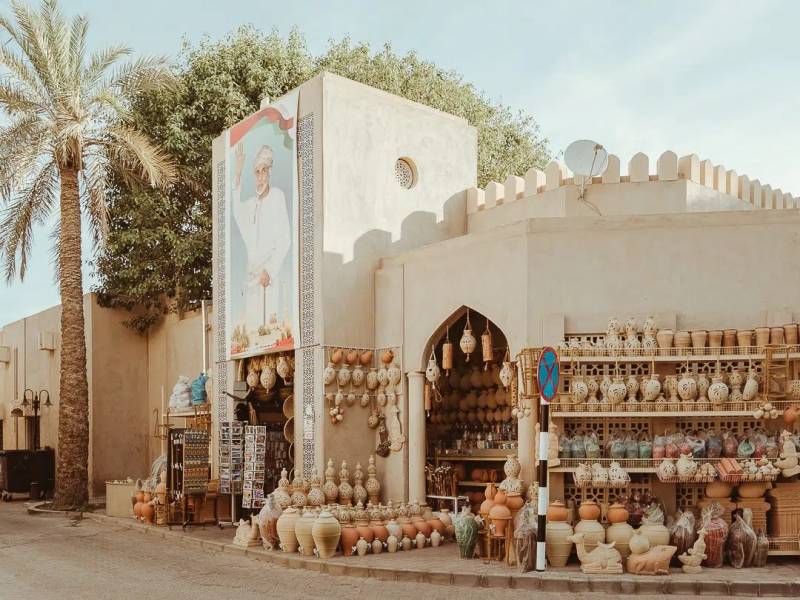
Nizwa. Photo: elenpradera.com -
This destination, which sprawl for kilometers across Oman's central desert, is known as the Wahiba Sands. The Wahiba Sands is an ocean of uniform dunes that seem to extend forever. The towering heaps of sand, pale gold at noon, turn rich yellow and coppery orange as the sun sets lower in the sky. The Bedu people dwell here, and it is a popular tourist destination for those looking for the real, original, and traditional Oman.
You can have a tour that allows you to ride on the back of a camel and camp in the desert beneath the stars to know more about the nomadic way of life in the Wahiba Sands. Many guided tours begin in the city of Ibra, which serves as the main entrance to the Wahiba Sands.
Location: Wahiba Sands, Oman
Best time to visit the Wahiba Sands: The greatest time to visit the Wahiba Sands is during the winter months, from October to March. Mid-April is the start of the summer season, which lasts until late September. Temperatures in Wahiba Sands in the summer might reach up to 50 degrees. During this season, the deserts would be extremely hot and sticky.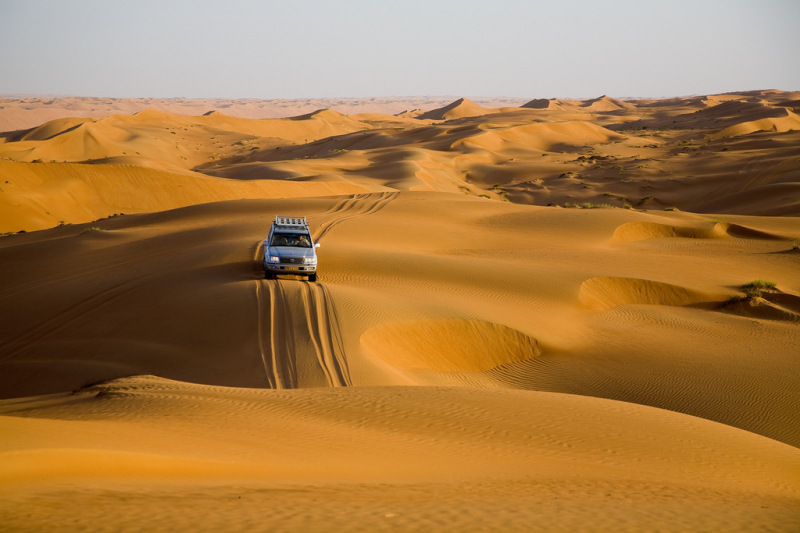
Wahiba Sands. Photo: en.wikivoyage.org 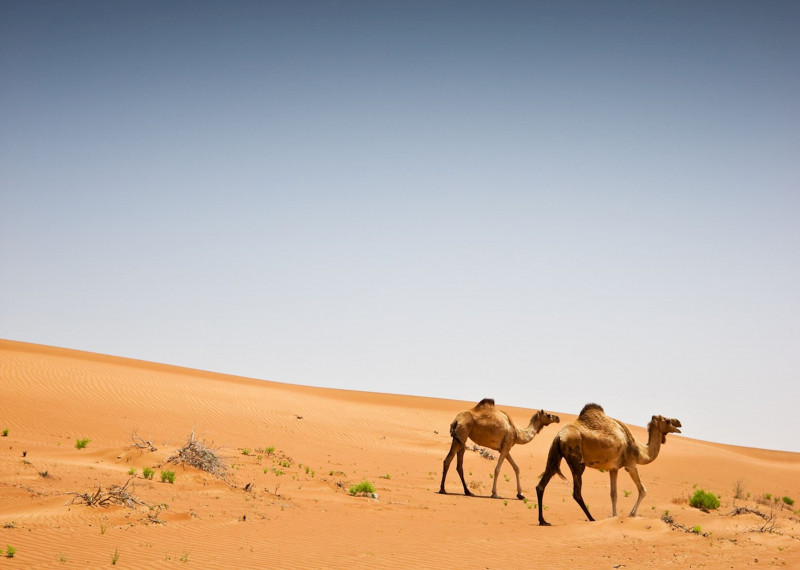
Wahiba Sands. Photo: audleytravel.com -
The Musandam Peninsula is located in northern Oman and is divided from the rest of the country by the United Arab Emirates. Parts of this region are exceedingly remote, and residents of mountain villages and coastal communities have long called them home. The Musandam Fjords provides breathtaking vistas that you should not miss when visiting this country.
Boat cruises to explore the beaches and peaks rising from the water, spotting dolphins from a Dhow, or traditional Omani boat, and scuba diving out to sea are some of the spotlights of a visit to the Musandam Fjords. Because of the low population and abundance of animals, this location is one of the best spots to visit in Oman for nature enthusiasts.
Location: Musandam Fjords, Oman
Best time to visit Musandam Fjords: Musandam is best visited between October and January when the water temperature lowers to roughly 21 degrees in January and mid-March. Even if the temperature is very hot, it is interesting to visit during the summer. The cost of flying to the gulf is usually lower at this time of year.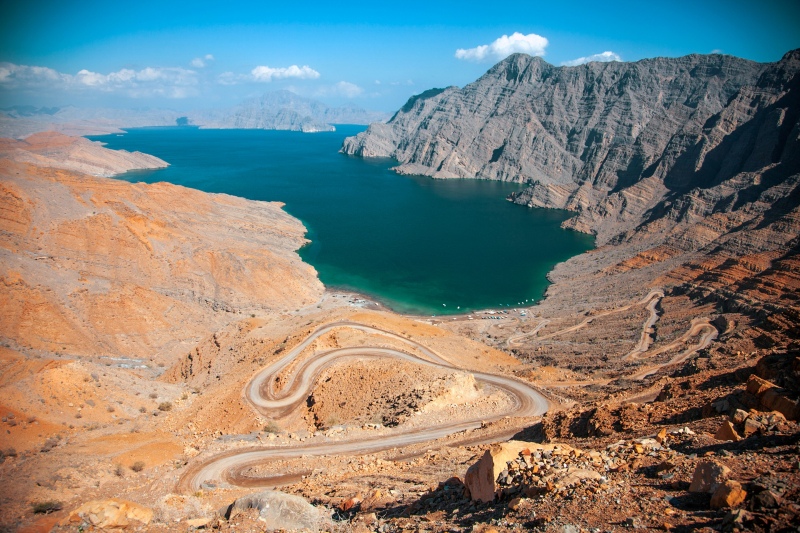
Musandam Fjords. Photo: telegraph.co.uk 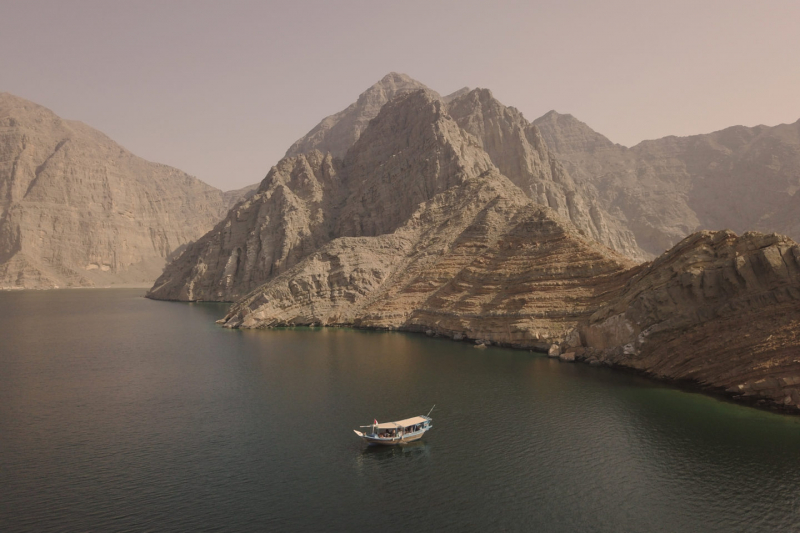
Musandam Fjords. Photo: wildmanlife.com -
Ras al Jinz, a turtle reserve on Oman's easternmost coast, helps to populate and safeguard the Indian Ocean's sea turtles. Ras al Jinz, in Oman's Ash-Sharqiyyah South Governorate, is the Arabian Peninsula's easternmost point. Green turtles lay their eggs here, as does the beach in the nearby community of Ras al Hadd. You may have a chance to see the turtle nests along the beach and even watch baby turtles hatch and make their way to the ocean if you visit during the summer or between May and October.
Ras Al Jinz is the most popular spot in Oman to see turtles nesting and hatching. It is possible for you to see the turtle reserve on a day trip to Muscat, but most people prefer to stay at the resort and explore additional attractions such as the Turtle Visitor Center and Museum.
Location: Ras al Jinz, Oman
Best time to visit Ras al Jinz: The peak season (and hatching) for Ras al Jinz turtles is from May to September, notably from July to September (sadly some of the hottest months to travel there).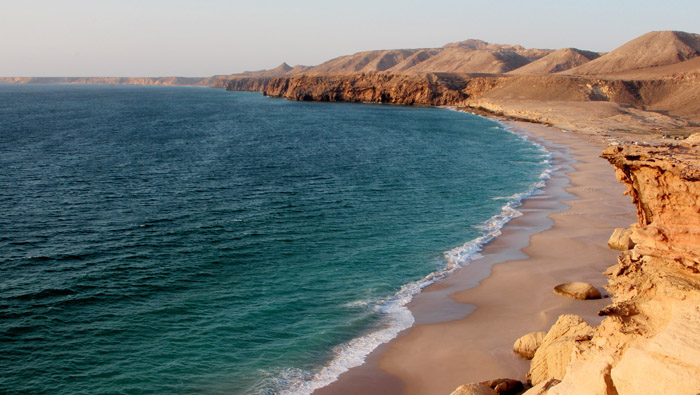
Ras al Jinz. Photo: timesofoman.com 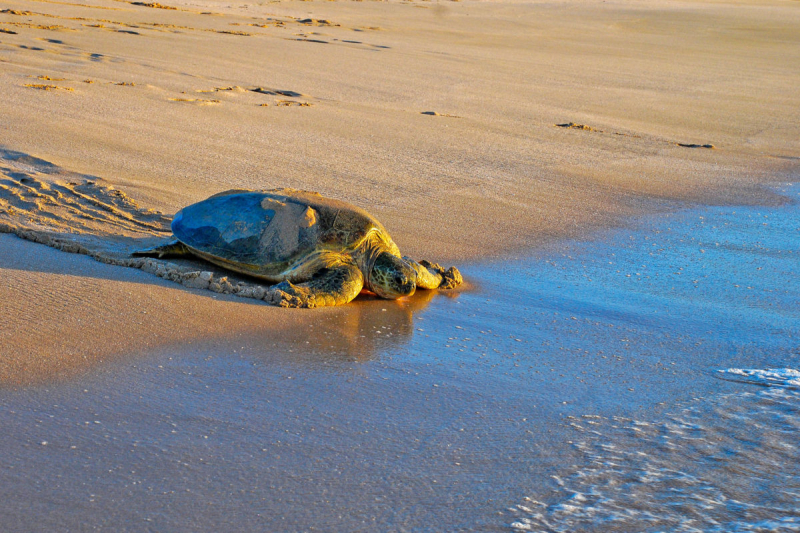
Ras al Jinz. Photo: franks-travelbox.com -
Green Mountain, also known as Jebel Akhdar, is the name of a mountain range in the Al Hajar Mountains. Expect nothing like a regular mountain summit, and do not be fooled by the green misdirection.
The area is protected now, and you can walk across see fruit-laden trees and lovely terraces when visiting here. Hiking may not seem tempting in Oman's deserts, however, it is a wonderful sport in Jebel Akhdar. A more practical point for you is that the mountains may be very cold, and temperatures fluctuate rapidly as you go between sun and shadow, as well as up and down slopes. Therefore, you should dress in layers and pack plenty of warm clothing.
Location: Jebel Akhdar, Oman
Best time to visit Jebel Akhdar: March and April are the greatest months to visit since the damask roses are in bloom. This fragrant heirloom bloom is noted for its sweet scent, which permeates the air in early spring.

Jebel Akhdar. Photo: audleytravel.com 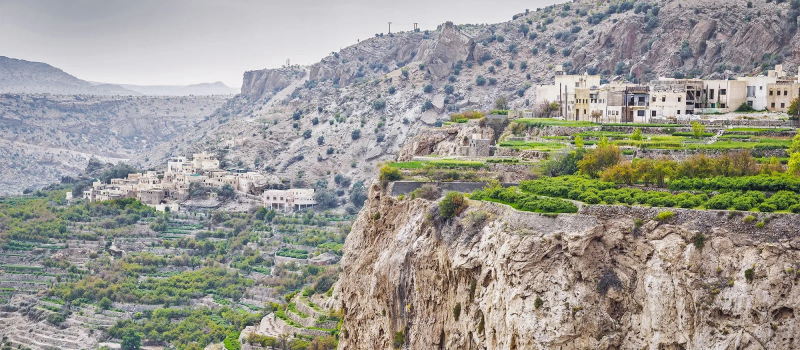
Jebel Akhdar. Photo: enchantingtravels.com -
Salalah, in southern Oman, is commonly referred to as Muscat's second city. Salalah is significant in today's world since it is the ancestral home of Ruler Qaboos, Oman's ruling sultan since 1970. You can see the spectacular Qaboos Palace and ancient buildings in Salalah's Old Town, known as the Haffa, during a visit to the city.
Salalah is known for its frankincense trade, so bring some home as a keepsake from the Haffa souk. Monsoon clouds from India send regular rain to the area between June and August, transforming the coastal region around Salalah into a green oasis with seasonal streams and waterfalls.
Location: Salalah, Oman
Best time to visit Salalah: The best time to visit Salalah is at any time of year. The best weather in Salalah is from October to April. However, because these are transitional months, the weather is still nice in May and September. The monsoon makes the climate humid from June through August, but the temperatures cool down.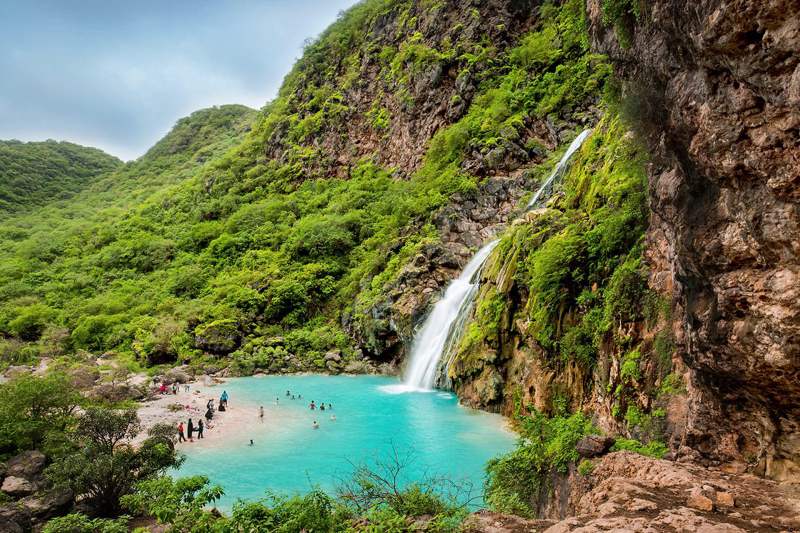
Salalah. Photo: timeoutdoha.com 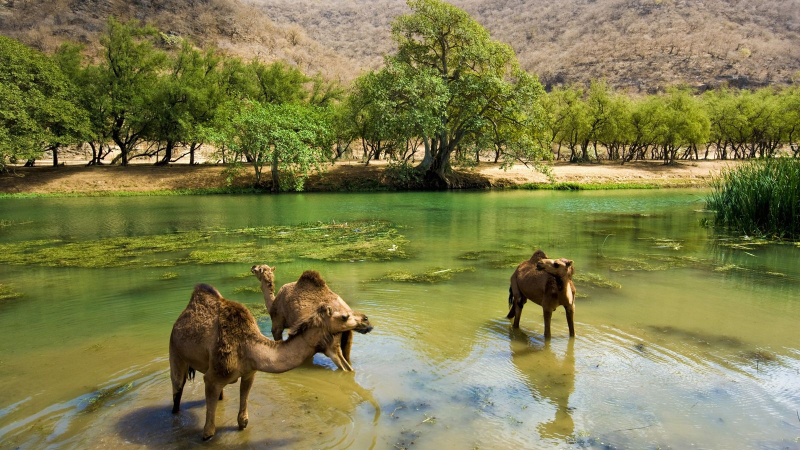
Salalah. Photo: nationalgeographic.co.uk -
Bahla is the eighth name on the list of the best places to go in Oman that Toplist has compiled for you. The city of Bahla in Northern Oman is another fantastic location in Oman. Bahla is a desert oasis that has served as a halting point for travelers for generations. Bahla is only 40 kilometers (25 miles) from Nizwa and has a magnificent and historic fort.
The Bahla Fort was built in the 13th century and was once controlled by the Banu Nebhan tribe. In addition to seeing the Bahla fort, you can see the city walls, which are made of adobe and run for over seven kilometers. If you are looking for a unique souvenir, Bahla is known for its large assortment of local ceramics.
Location: Bahla, Oman
Best time to visit Bahla: The winter months of September to March are the finest time to visit Bahla. Summer in Oman is the warmest season, and traveling between June and September is not recommended.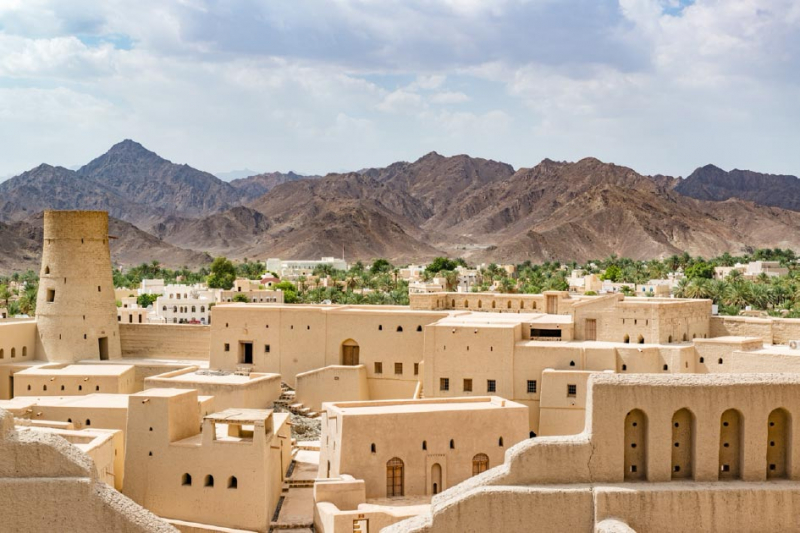
Bahla. Photo: ancient-origins.net 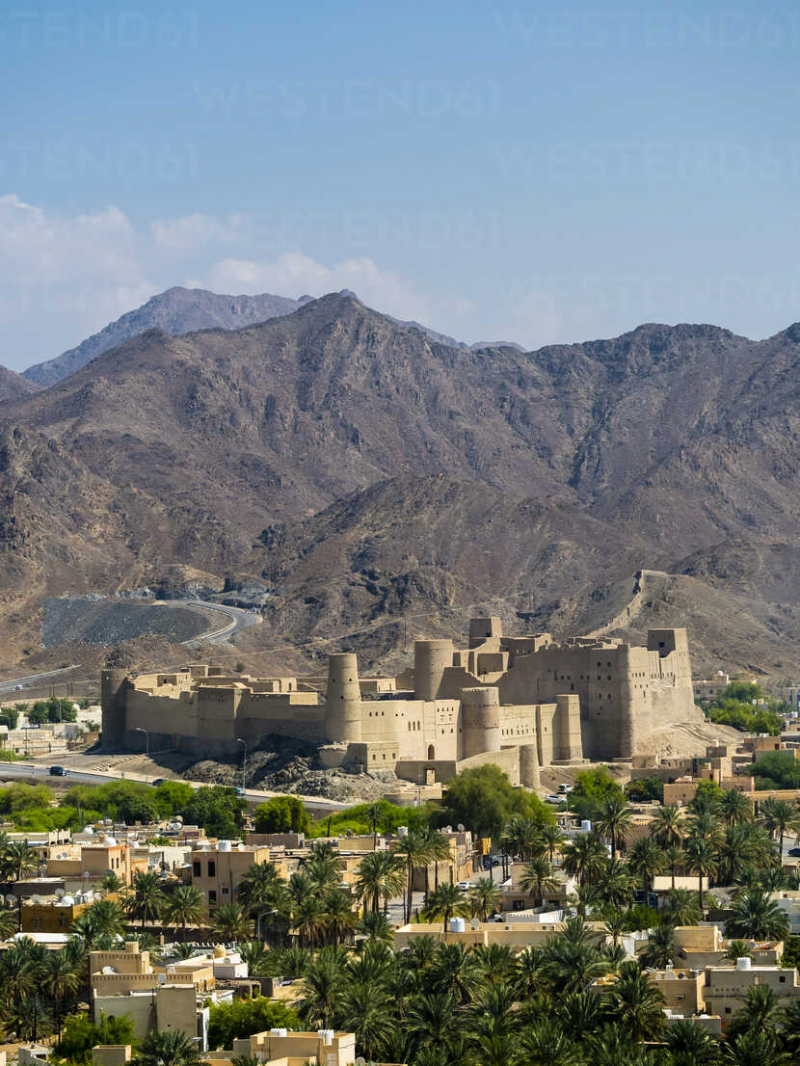
Bahla. Photo: ancient-origins.net -
Masirah Island, located just off the coast of Oman, is a unique location for travelers seeking sun, beaches, animals, and history. The Omani airbase is located on Masirah Island, but the towns are minor. That means fewer people and more private areas to discover.
Masirah Island, Oman's largest island and the most relaxing weekend vacation destination is brimming with beautiful beaches and fascinating water sports. Ferries go frequently between the island and the mainland. Swimming, checking out the number of shipwrecks right off the coast and viewing the more than 30,000 turtles that come each hatching season are among the most popular activities on Masirah Island.
Location: Masirah Island, Oman
Best time to visit Masirah Island: The months of January, February, March, and November, December are the finest months to visit Masirah Island because the weather is nearly perfect. The average temperature will be between 23 and 26 degrees. You will be able to explore the island as well as participate in cool aquatic activities throughout these months.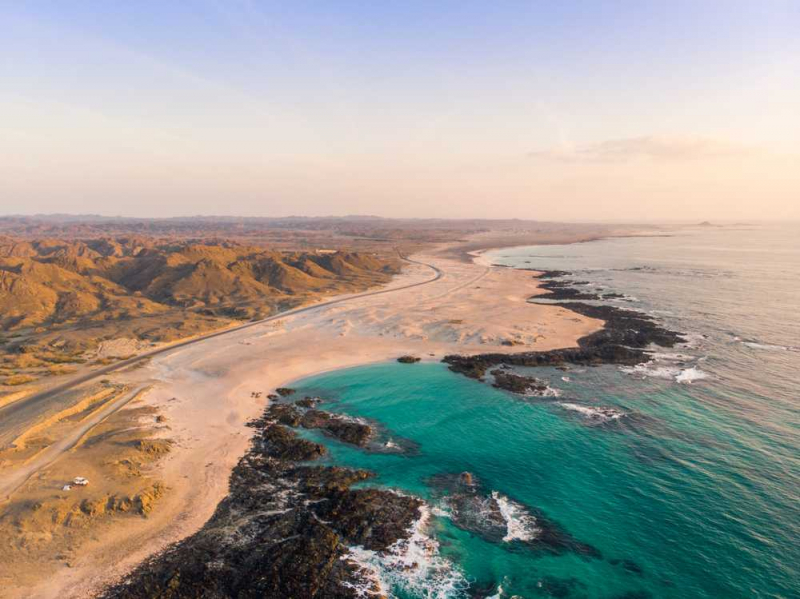
Masirah Island. Photo: holidify.com 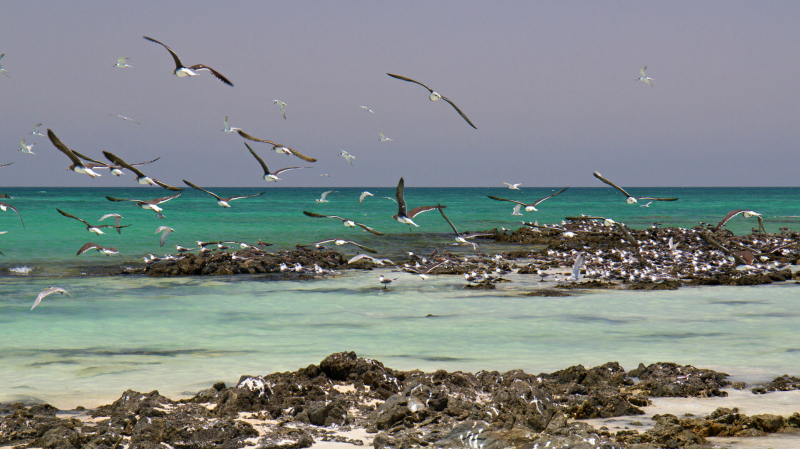
Masirah Island. Photo: steppestravel.com -
Smaller villages like Misfat Al Abriyeen help to convey a more traditional ambiance in Oman when larger towns might appear highly contemporary. This mountain village is made up of stone structures in various tones of orange and brown, and it resembles an Italian mountain village rather than one found on the Arabian Peninsula.
Misfat Al Abriyeen, on the other hand, is a wonderful example of mountain life in Oman. A steep road climbs up the mountain, where you may walk through the buildings and observe the rich flora and banana trees. You may climb a historic watchtower above the settlement to overlook Misfat al Abryeen, as well as the surrounding farms and water-filled dams.
Location: Misfat Al Abriyeen, Oman
Best time to visit Misfat Al Abriyeen: Having said that, even in the summer, the temperatures in Misfat are pleasant, with a rising coolness as the evening progresses. Temperatures in the northern alpine parts of the world remain unaffected, and the climate is considerably different from that in the south.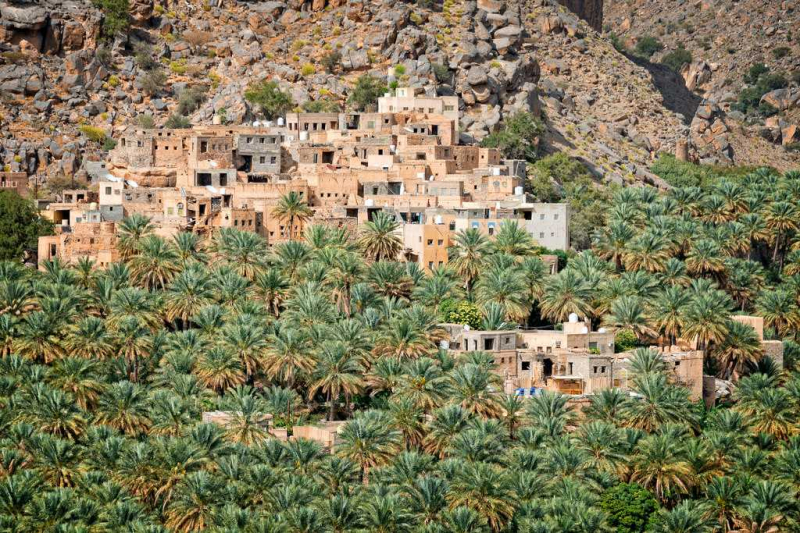
Misfat al Abryeen. Photo: holidify.com 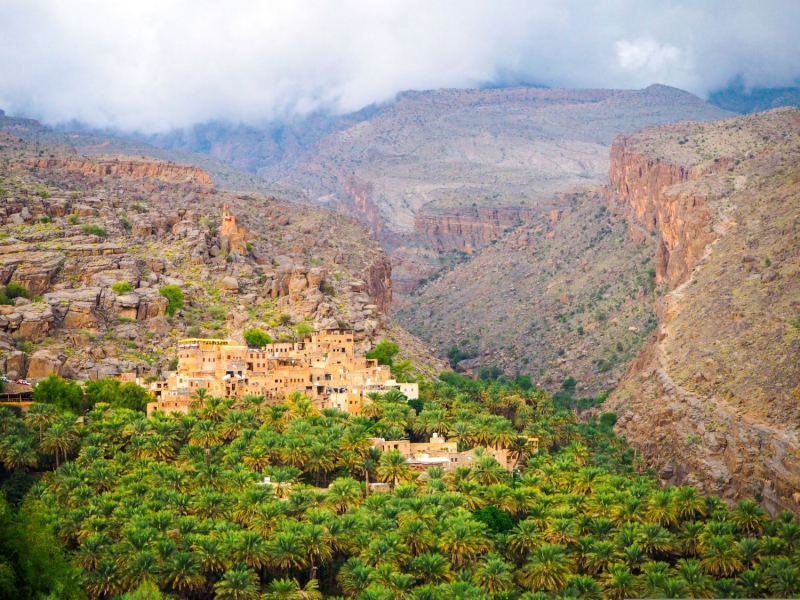
Misfat al Abryeen. Photo: muchbetteradventures.com












